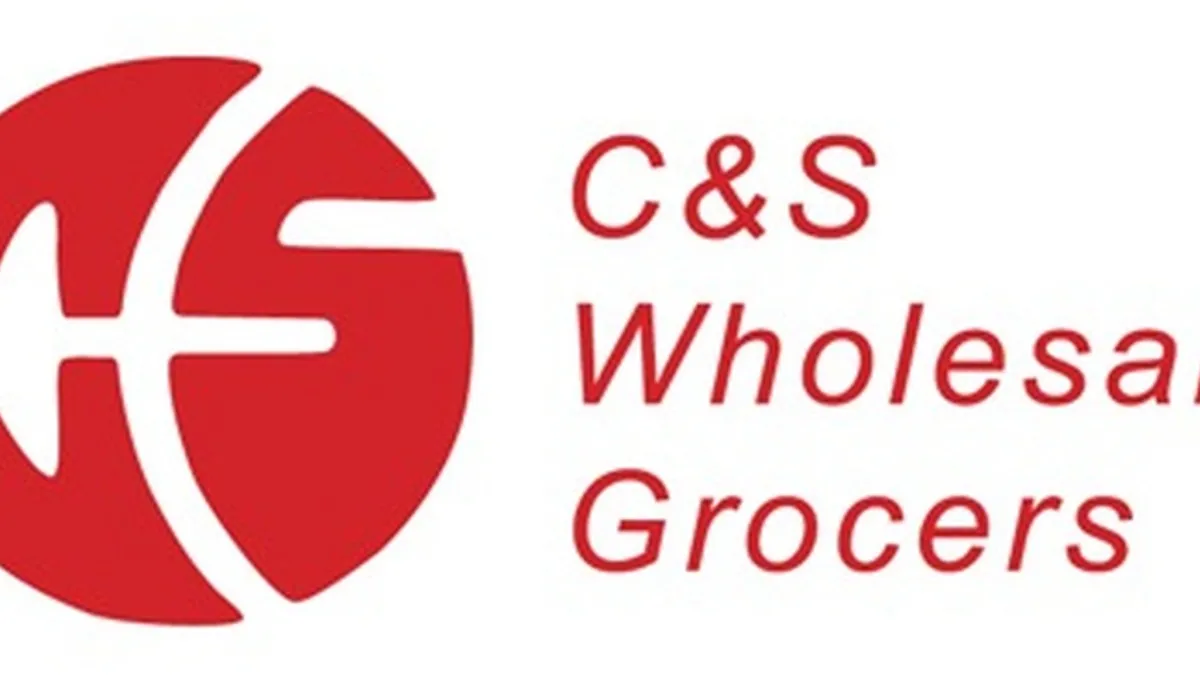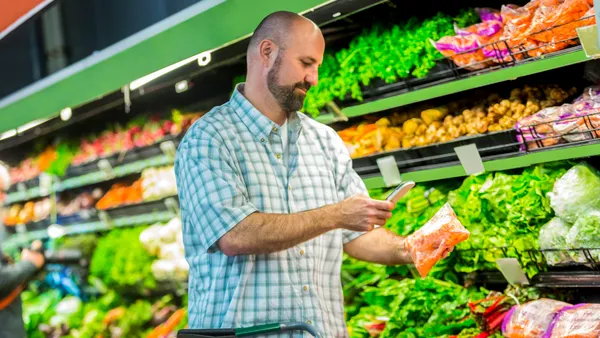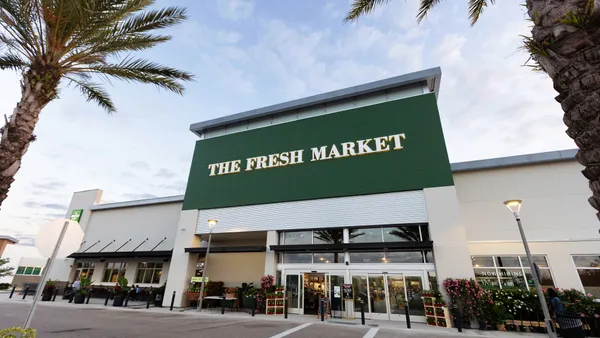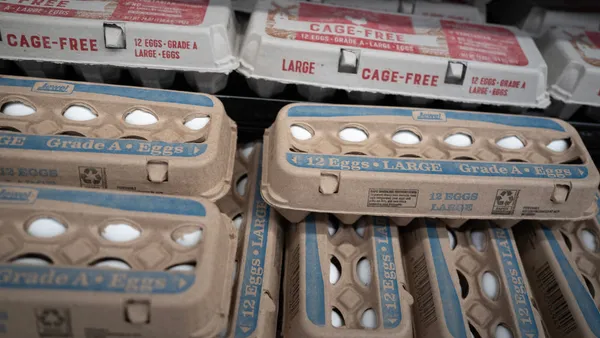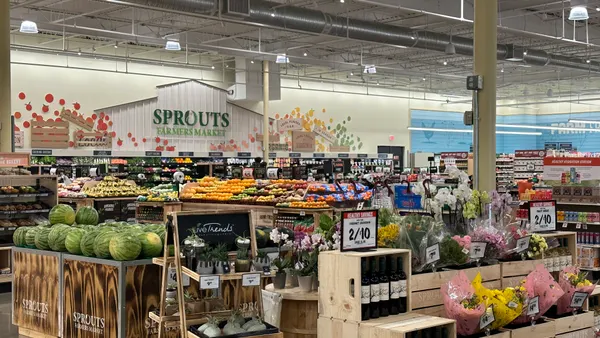Dive Brief:
- Consumers in the U.S. went into full-on pantry stocking mode after President Donald Trump first acknowledged the threat of coronavirus to the nation in a late-February press conference, according to statistics Nielsen emailed to Food Dive. In the first week of March, oat milk sales were up 347.3%, dried beans sales rose 62.9%, tuna sales were up 31.2%, and dried milk sales were up 126.3%. Sales of fresh meat alternatives increased 206.4% compared to last year, and kombucha sales were up 10.1%, Nielsen reported. Conversely, produce sales were down, with apple sales falling 3.2% compared to last year and celery sales dropping 18.7% during the period.
- During the first two weeks of March, people were especially intent on buying items to protect themselves from the virus, according to statistics from AdAdapted, which provides advertising tools for shopping list apps including Out of Milk, Listonic, and OurGroceries. Appearances of hand sanitizer on shopping lists were up 499% compared with a typical week before the crisis began, while appearances of masks and disinfectant wipes rose by 238% and 161%, respectively, AdAdapted found.
- People also showed strong interest in buying corned beef, traditionally eaten around St. Patrick's Day, and alcohol, AdAdapted reported. Appearances of corned beef on shopping lists grew by 250% during the first half of March, and alcohol was up by 112%.
Dive Insight:
As millions of U.S. consumers stocked up on essentials to prepare for long stretches of time at home to slow the spread of coronavirus, Nielsen statistics show a lot of them bought food that will sustain them for the long haul.
The U.S. is following a potentially transformative pattern that many other countries that have already seen more severe coronavirus outbreaks have gone through. The first phase, proactive health-minded buying, is slow consumption growth in response to general news and threats of coronavirus-related infections. Reactive health management is the next phase, where consumers stock up on vital medical and cleaning goods, like hand sanitizer, soap and antibacterial wipes. The third phase, which Nielsen said the United States transitioned to after Trump's Feb. 26 press conference, is pantry preparation.
And many Americans certainly seem to be preparing for a long-term period of isolation. According to Nielsen, powdered milk sales, which had been down 3.3% in the beginning of February compared to last year, increased 84.4% in the last week of the month. Sales of dried beans and canned meat were up more than 30% the last week in February, and chickpeas, rice, tuna and black beans were all up more than 20%.
People's interest in buying canned foods remains elevated as the crisis has developed, according to AdAdapted. Canned fruits and vegetables both appeared on people's shopping lists during the first two weeks of March more than twice as often as normal, the advertising company reported.
While some of Nielsen's statistics don't necessarily point to pantry prep, it's likely that massive growth in some products is reflected in these statistics. Oat milk has seen an uptick, with analysts saying market giant Oatly has seen triple digit annual growth prior to the pandemic. In the last year, more major companies have brought their own oat milk brands to the shelf, including Danone and Chobani, so it's natural that the category would see massive growth. There has also been a major expansion in the number of fresh meat alternatives on grocers' shelves in the last year, with CPG launches from Impossible Foods, Beyond Meat and Nestlé.
In Nielsen's analysis, the next step of consumption is quarantined living preparation, which the U.S. may be in the midst of now, considering the empty shelves and crowded stores during the weekend. Nielsen said this step will be defined by online shopping infrastructure being put to the test. The fifth step is restricted living, during which the market intelligence firm predicts supply chain constraints and less discretion from consumers may result in higher prices for CPG and hygienic goods.
Scott McKenzie, Nielsen’s Global Intelligence Leader, said in the report it's important for those in the market to identify spending patterns so supply of vital items can be maintained as the nation moves through these phases.
“We’re already seeing additional markets enter the threshold of 'restricted living,'" he said in a statement. "As patterns begin to emerge in response to news events of this nature, it will be imperative for companies to learn from these scenarios so they can sustain growth even in times where COVID-19 has uprooted people’s lives. These patterns will help provide leading and trailing indicators to those trying to understand how people will respond as developments continue to play out at different times in different countries.”
Nielsen's last phase, which it said only China has reached at this point, is living a new normal. The buying patterns adopted during the outbreak are likely to have a lasting impact on consumers. And while they may not continue to stockpile dried beans and powdered milk, they may be more likely to rely on the online shopping apps they discovered during this period or place new emphasis on nutritional labels to look for healthier food.






